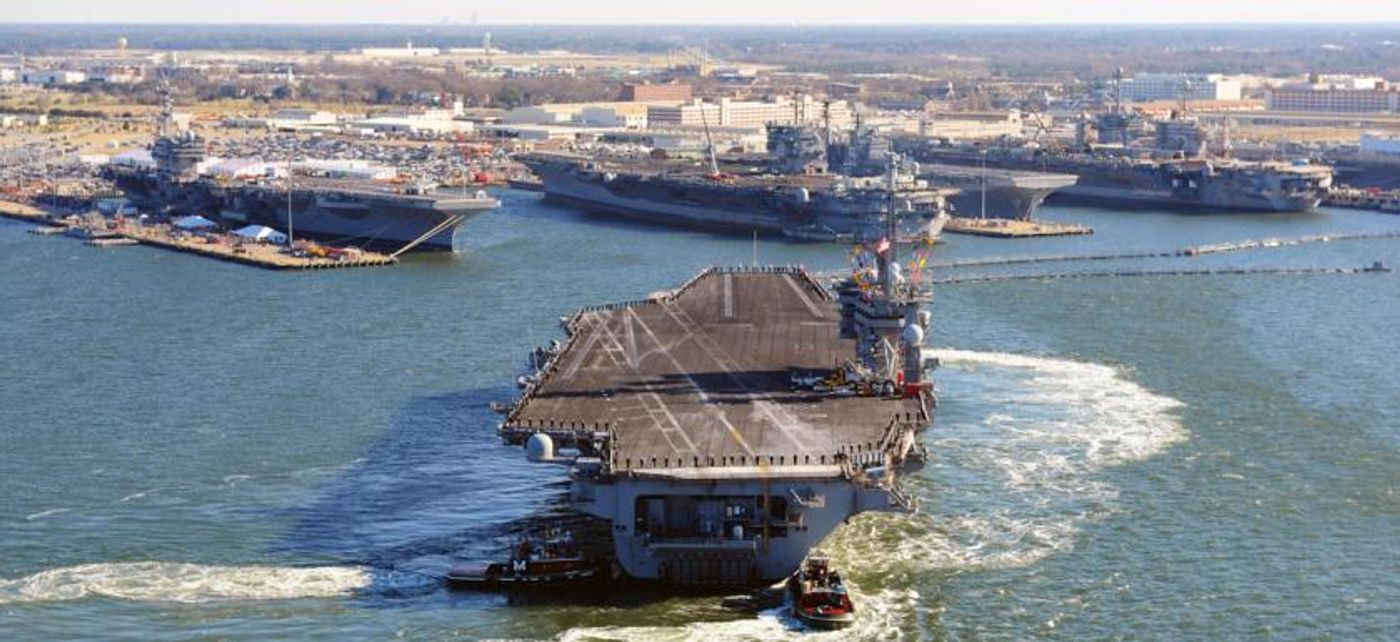Half of US military sites under threat by climate change
According to a report published last week by the US Department of Defense (DoD), almost half of US military sites are under siege from an unlikely suspect: climate change. The study, coming from the Pentagon, includes a three-phase survey begun in 2014 that aimed to analyze how the climate was impacting military assets. The survey ultimately determined that drought, wind, and flooding, among other climate factors, threaten 1,700 out of 3,500 sites worldwide.
“Our warfighters require bases from which to deploy, on which to train or to live when they are not deployed. If extreme weather makes our critical facilities unusable or necessitate costly or manpower-intensive work-arounds, that is an unacceptable impact,” the study explains.
In order to analyze climate impacts, the survey asked military personnel to recognize any negative effects they may have experienced from extreme weather effects that could be climate-related. These negative effects included impacts to military assets, defined as Airfield Operations (on and off-site), Training Areas/Ranges (on-site), Piers/Waterfront Services (on and off-site), Personnel Support (on-site), Command, Control, Communications, HQ Buildings (on-site) Computers, Intelligence, Surveillance and, Information Systems (on and off-site). The survey also took into consideration negative impacts on assets in the surrounding community that military sites depend on (including utilities, transportation, emergency response).
Respondents were informed to note any sort of observed consequence from various climate factors such as flooding due to storm surge, flooding due to non-storm surge events, extreme temperatures, wind, drought, and wildfire.
“Changes in climate can potentially shape the environment in which we operate and the missions we are required to do,” the report stated.
The survey produced results that clearly point toward the urgency of mitigating climate change. Following the report, the highest number of negative effects were caused by drought with 782; 763 cases of negative effects from wind were reported; meanwhile, 706 cases were reported for non-storm surge-related flooding. Extreme temperatures produced 351 cases, incorporating roughly 10% of all sites and about 6% of sites were affected by flooding from storm surge and wildfire. The survey highlights that airfields, energy infrastructure, and water systems were assets that were most frequently affected. Elaborating, the report verifies that “The geographic dispersion of sites reporting negative effects from one or more effects was very broad…”.
A study from the Union of Concerned Scientists published in 2016 looked at 18 military bases in particular in order to determine their vulnerability in a changing climate. This report wrote: “The military is at risk of losing land where vital infrastructure, training and testing grounds, and housing for thousands of its personnel currently exist.” They pointed towards specific statistics to demonstrate the current state we are in:
- “By 2050, most of the installations in this analysis will see more than 10 times the number of floods they experience today.
- By 2070, half of the sites could experience 520 or more flood events annually—the equivalent of more than one flood daily.
- By 2100, eight bases are at risk of losing 25 percent to 50 percent or more of their land to rising seas.
- Four installations—Naval Air Station Key West, Joint Base Langley-Eustis, Dam Neck Annex, and Parris Island—are at risk of losing between 75 and 95 percent of their land by the end of this century.
- Flooding won’t be confined to the bases. Many surrounding communities will also face growing exposure to rising seas.”
To read more about this study, visit the Union of Concerned Scientists here.
Sources: The Guardian, Department of Defense, Union of Concerned Scientists









